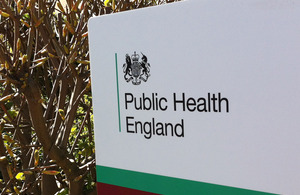Drowning in baths a risk for young children warns PHE
PHE is raising awareness of the dangers of accidental child drowning involving the use of bath seats.

Public Health England (PHE) is alerting parents, carers and health professionals to the dangers of children drowning in baths following a small number of deaths and ‘near misses’ reported by Child Death Overview Panels in London. Accidental child drowning in baths is a tragic but preventable cause of child injury and death, which remains an issue across the country.
In particular, PHE is raising awareness of accidental drowning involving the use of bath seats, which have been implicated in these cases. The Royal Society for the Prevention of Accidents (RoSPA) reports that 1 in 3 accidental drowning deaths in young children (2 years or under) involve bath seats.
Dr Yvonne Doyle, regional director of PHE London, said:
If unsupervised, young children can tip over in a bath seat and become trapped or climb out of it, with potentially fatal consequences. These seats are used by parents when bathing babies and young children but they can often be mistaken as safety measures, instead of bathing aids requiring constant adult supervision.
Babies and young children should never be left unattended in a bath, not even for a minute. Even if a child is quickly rescued from drowning, they may already have stopped breathing. A significant proportion of children who have near misses may suffer brain damage that can require lifelong financial and healthcare support.
As part of the child safety update produced by PHE, work is underway to educate parents and carers, as well as health professionals across London to be alert to the dangers of equipment used at bath time and that an adult must always be with children who are near, or in water.
David Walker, leisure safety manager for the (RoSPA), said:
Bath seats are a really useful tool, as parents with babies and toddlers sometimes need all the help they can get, and that’s the intention of these products. However, they can lead to a false sense of security.
Distractions from the phone, other children or someone at the door are really quick events that have led to tragedies. What feels like a couple of seconds can be a minute or two, which is easily enough time for significant injuries or even death to occur.
This simple reminder to parents can help to avoid what are life-changing events. Never leave a baby or young child unattended in the bath, even just for a moment.
Katrina Phillips, chief executive of the Child Accident Prevention Trust (CAPT) said:
While a baby may look secure in a bath seat, they can easily wriggle or slip out. Or the seat itself can tip over and immerse the baby in water.
Babies can drown in just a few centimetres of water, very quickly and with no noise or struggle. They can’t recognise danger and don’t have the strength to try to reach the surface. This means you need to stay with your baby all the time near water.
Bath seats are useful pieces of kit for busy parents but they are not safety devices. In the UK around 13 children (under 5 years) die from drowning each year, and 1 in 4 of these deaths occur in a bath. For each drowning fatality, there are 8 non-fatal drowning events that are serious enough to require hospitalisation.
Ends
Notes to editors
- PHE exists to protect and improve the nation’s health and wellbeing and reduce health inequalities. It does this through advocacy, partnerships, world-class science, knowledge and intelligence, and the delivery of specialist public health services. PHE is an operationally autonomous executive agency of the Department of Health. www.gov.uk/phe Follow us on Twitter @PHE_uk
- To request a copy of the child safety update (’Child drowning and use of bath seats’) please contact the Public Health England London press office.
- In June 2014, PHE published Reducing unintentional injuries in and around the home among children under 5 years, a report further explaining the scale and nature of accidental child injuries at home.
- For the Royal Society for the Prevention of Accidents press office, please contact Adam Grinsell on 0121 248 2135 or agrinsell@rospa.com.
- For the Child Accident Prevention Trust press office, please contact Pam Prentice on 020 7608 7361 or pam.prentice@capt.org.uk